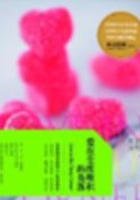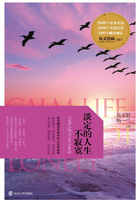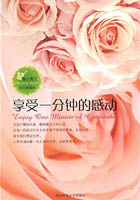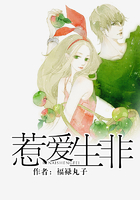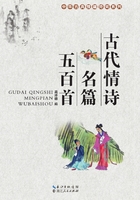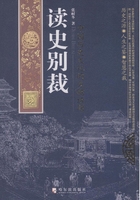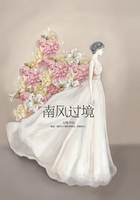We were in the Perrier-Jouet caves, not enormous by Champagne standards, but sufficiently big to lose yourself in quite easily. (And very enjoyably, as you would be lost in the middle of twelve million bottles.) The oldest caves, those immediately under the Perrier-Jouet offices, had been hacked out of the chalky earth by hand, and you can see the scars, made by picks and now blackened with age, in the rough arches that lead from one cave to the next. Onward and downward we went, until we came to the angular ranks of tent-shaped wooden racks, each of them sprouting dozens of bottles.
The racks, as tall as a man, were invented in the nineteenth century to solve the problem of the sediment that forms in the bottle as a result of fermentation. The bottles are stuck, neck first, into oval holes set at a steep angle that allows the sediment to slide up to the cork. To make sure this happens completely and evenly, the process needs a little assistance from time to time. The bottles have to be lifted gently, given a slight clockwise turn, and replaced. This is remuage, and despite experimenting with ingenious mechanical methods, progress has yet to find a totally satisfactory replacement for the human hand. Cold and lonely work it must be, too, but an experienced remueur can twist as many as 3,000 bottles an hour.
第一章 Conjuring with Grapes (2) (1)
After remuage comes dégorgement. (You’ll have to forgive the French words, but their English equivalents don’t sound nearly elegant enough to describe the making of champagne.) The neck of the bottle is frozen so that the sediment, trapped in ice, can be removed. The bottle is topped up, recorked, labeled, et voilà! What started as grapes in a muddy field has been turned into the most famous drink in the world.
Should you drink it immediately, or lay it down for a year or two? Or even longer, if it’s a vintage champagne? Experts disagree, as experts tend to do, and there are those who say that champagne kept too long will lose its sparkle and character, and become a flat shadow of its former self. It depends, of course, on the quality of the wine, and I can personally vouch for the benefits of age that we enjoyed on our last night.
第一章 Conjuring with Grapes (1) (2)
We had been invited to dinner at the hotel particulier of Mumm in Reims. There was our old friend, the Man with the Magnum, and as the courses came and went so did the’85 Cordon Rouge and the’85 Grand Cordon Rose. For the finale, another magnum, this time unlabeled, was nursed to the table as carefully as though it were an extremely rich old aunt from whom one was hoping to inherit. I looked at the menu and saw that it was simply noted as a Very Old Vintage.
I held my glass up to the light and watched the whispers of tiny bubbles rising from the bottom. Whatever else the years had done, they hadn’t subdued the sparkle. They had, however, given the wine a very slightly toasted bouquet, the pain grillé nose of a truly venerable champagne. It tasted rich and delicate and dry, and it was thirty years old. There and then, I made up my mind never to drink cheap champagne again. Life is too short.
真正的好香槟具有提神醒脑的功效。这是香槟酒上乘品质的最好证明。你看,直到下午两点半,我们不仅人是醒着的,而且头脑还相当清醒,正好可以迎接下午的功课,去研究葡萄由一串串变成一瓶瓶的演进过程。
我们从白丘的白葡萄园开始。这片葡萄园一年中有很长一段时期,都是杳无人烟,只有寥寥数个移动缓慢、吃苦耐劳的人影,在田间查看葡萄的生长情况。但现在是农忙时节,园中狭长的绿色走廊,挤满了秋收的采摘者。这时正是采收葡萄的好天气,暖和又干爽。而晚春的霜降带来的损害也比预期要少。今年将是个很好的丰收年。
人们把一篮又一篮的葡萄送到了田尾的收集点,再用卡车或拖拉机运到克拉蒙村的玛姆酒庄。那里的榨酒机早已恭候多时了。这些用来折磨葡萄的榨汁机是一种木制的、巨大的圆形设备,侧边都是百叶板。这巨无霸一口足以吞下几吨葡萄。然后,一块巨大的木制压板自上而下,以非常非常慢的速度落下,压在葡萄上,将它们压破,挤榨出汁,之后源源流入地下的大桶里。
葡萄遭受这样无情的压榨,前后共需三次。第一次榨出的是最上等的葡萄汁,叫作“葡萄酒酒头”;第二次榨的汁,则用在混成酒上;最后一次压榨的残汁,蒸馏以后用来酿成当地人喝的“白兰地”,也就是他们说的、会促使你胸部长毛的“渣酿香槟”。一滴也不浪费,太不可思议了。同一批葡萄居然能变出两种差别这么大的酒。一种雅致、清淡;另一种呢——嗯,我刚好喜欢渣酿酒,但你恐怕永远不会用“雅致”一词来形容它。
我们沿着葡萄汁走过的路线来到了发酵桶这边。此时,我要提醒大家的是,万一有人建议你吸一口发酵期的香槟气味,请你婉言谢绝。我就犯了这个错误,倾身靠向一只敞开的酒桶,想以鉴赏家的派头嗅上一嗅,结果我差点从离地十英尺高的平台上跌下来。当时我只觉得鼻子像是针扎一样难受。我感到一阵子头晕目眩,恳请挪到生产线上气味不那么厚重的地方休养生息。接着,我们便弃此酒桶,转往地球内部探险去也。
在莱姆斯和艾柏内这两座名城的地底下,其实有长达数英里的地窖和通道,有的深达三四层楼。里面全都塞满了香槟。地窖凉爽、幽暗,温度始终保持恒定。所以,一瓶瓶的葡萄酒便能在这完美的储存条件下大睡其觉。它们仿佛墨绿色的山峦,重重叠叠,果真是香槟爱好者的极乐世界。
我们来到佩利耶·珠玉的地窖。按照香槟区的标准,这地窖算不上大,但也大到足以让你一不留神就会迷失在里面。(迷失在1200万瓶窖藏葡萄酒里,也未尝不是一件令人愉快的事情。)其中最古老的地窖,就在佩利耶·珠玉的办事处的正下方,是由人工从白垩土质地面向下开凿出来的,你现在还能看得见挖凿的痕迹,留存在连接一间间地窖的、粗糙的拱门上,并因岁月积淀而变得发黑。随后,我们一路走下来,行至深处,来到一排排像帐篷一样、呈锐角排列的木制搁物架前。只见每个架子里都是酒瓶林立。
这些木架子被称作“人字型酒架”,是在19世纪时发明出来的,为的是解决香槟酒因发酵而在瓶内形成沉淀的问题。这些瓶子倒竖着,插在架子的椭圆形洞内,呈陡斜的角度,以便沉淀物能慢慢滑落到瓶塞处。为了确保沉淀物能完全、均匀地滑落下来,这过程时不时需要人为帮忙一下。举起酒瓶要轻柔,再按顺时针方向稍微转动一下,然后放回原处。这个过程叫“转瓶”。虽然也尝试过一些借助智能机器的方法,但是要找到完全令人满意、可以取代人类双手的替代物,还有待继续努力。这想必是一个冰冷又寂寥的工作,但是,一个熟练的转瓶工人,1小时可以处理多达3,000瓶的酒。
转瓶工序完成之后,接下来就是“除渣”了,就是将酒瓶颈部冷冻起来,以便取出冻结在冰里面的沉淀物。然后,加满酒瓶里的酒,重新塞上软木塞,贴上标签,就此大功告成!出自泥泞田野的葡萄一下子脱胎换骨,变成琼浆玉液了。
你是立马喝上一口呢,还是存放个一年两年,甚至更久?(如果这是好年份的香槟的话。)专家们对此也意见不一,他们总是这样。有些人说香槟如果存放太久不喝,会失去它的泡沫和风味,变得像酿制之前一样平淡。当然这要看酒的品质如何了。而我个人是敢担保经年陈酿的好处的,就像我们在最后一晚享用的那瓶酒一样。
我们受邀到莱姆斯城的玛姆特色饭庄进晚餐。席间有我们的老友,就是捧着大酒瓶的那位仁兄。一道道菜肴送上、撤下,标有1985年份的红绶带和大绶带玫瑰红香槟也随之进进出出。最后压轴的是一瓶未贴标签的美酒——仿佛是一位极其富有的老妇人,而我们要从她那儿继承点什么似的,被小心翼翼地呈上了桌面。我瞧了一眼菜单,上面只是简单的注明是陈年老酒。
我举起酒杯迎向灯光,端详细小的泡沫由杯底升腾时的私语。不管岁月用了些什么手法,都不曾制伏这些泡沫。不过,时光倒是为这美酒添加了一缕幽淡的烤面包的香气。这是真正年份久远的香槟美酒才会散发出来的气味,入口馥郁、雅致、清淡,酒龄30岁。此时此刻,我下定决心永远不再喝一口廉价的香槟。人生苦短啊!
实战提升
Practising&Exercise
单词注释
quality [5kwCliti] n. 质,质量
inhale [in5heil] v. 吸入
muddy [5mQdi] adj. 多烂泥的;泥泞的
venerable [5venErEbl] adj. 令人肃然起敬的;可尊敬的
实用句型&词组
They are looking forward to her visit. ( 盼望)
Sam is as rich as Alexander. (同样地)
He noted the importance of the problem in his lecture. (提到,指明)
翻译行不行
我们从白丘的白葡萄园开始。
当然这要看酒的品质如何了。而我个人是敢担保经年陈酿的好处的,就像我们在最后一晚享用的那瓶酒一样。
此时此刻,我下定决心永远不再喝一口廉价的香槟。人生苦短啊!
第一章 Travel the World for Free (1)
原来可以免费周游世界啊


